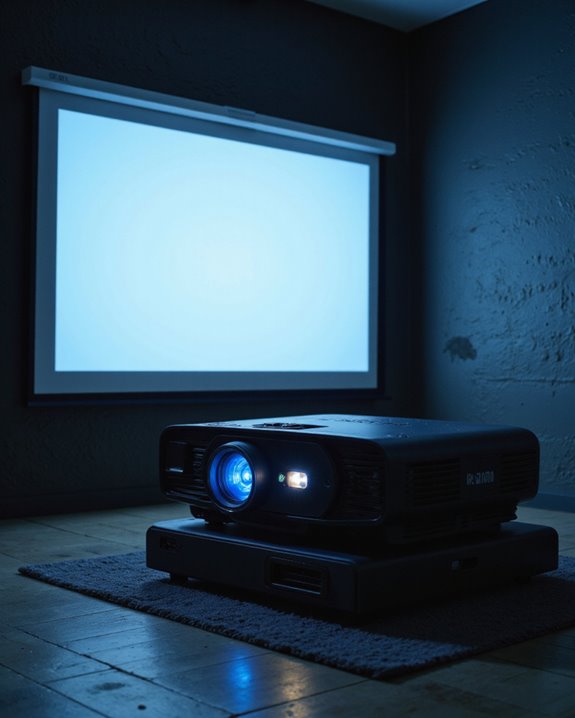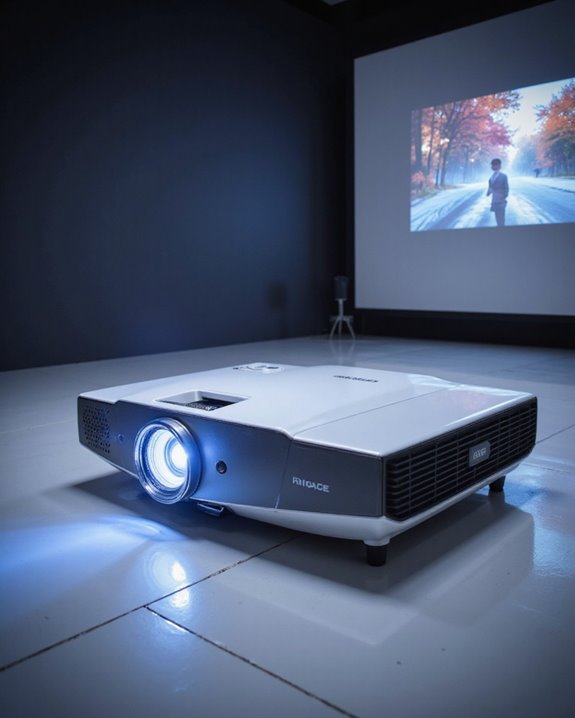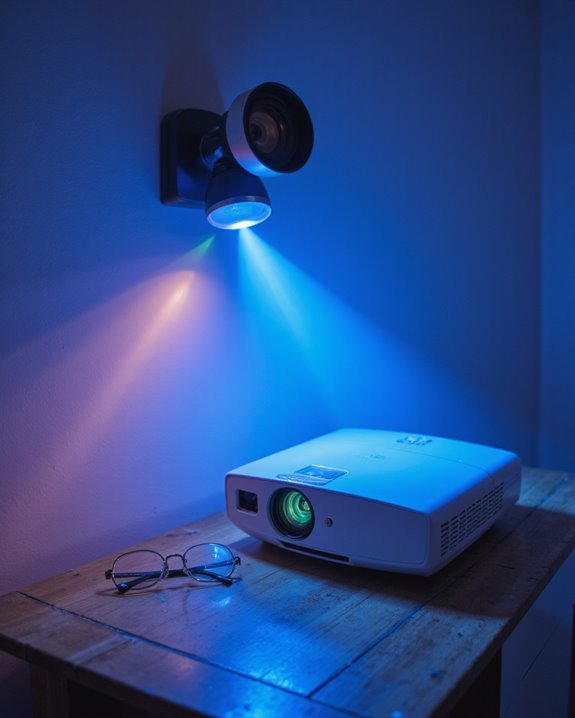Projector headlights use a clear, round, glass-like lens in the center of the headlight assembly to focus and direct light into a sharp, controlled beam. This lens is convex, meaning it curves outward. Key features include a defined cutoff line, often seen as a sharp boundary where the light stops, and a compact, modern housing. Projector headlights often use LED, HID (Xenon), or specialized halogen bulbs. Spotting these markers helps distinguish projector headlights from others, with more differences found below.
Key Takeaways
- Projector headlights are found on vehicles, not TVs; TVs do not use projector headlights for illumination or display.
- If your question refers to a TV, check for terms like “projector lens” or “headlight” in the product specifications—these are not standard for TVs.
- Vehicles with projector headlights have a round, convex glass lens at the center of each headlight assembly.
- Projector headlights produce a sharp, defined cutoff in the light beam, unlike the broader, less focused beam of reflector headlights.
- Look for regulatory markings (DOT or ECE) on your vehicle’s headlight housing to confirm if you have projector headlights.
Understanding the Basics of Projector Headlights
How can one distinguish projector headlights from other lighting technologies? Projector headlights use a special lens to focus light, creating a sharp, controlled beam. This technology is common in modern vehicles, not televisions. Key features include:
- Lighting color: Projector headlights often utilize LED or Xenon bulbs, producing a bright white or bluish hue, unlike the yellowish tones of older halogen lights.
- Brand distinctions: Some brands offer unique lens shapes or housing designs, but all projector headlights share similar core components.
A projector system contains:
- A glass lens for beam focus
- A compact housing
- Adjustable alignment for precise road illumination
These headlights are brighter than traditional reflector types, reduce glare, and enhance nighttime safety. Maintenance involves regular cleaning and occasional bulb or lens upgrades for ideal performance.
Key Visual Differences Between Projector and Reflector Headlights
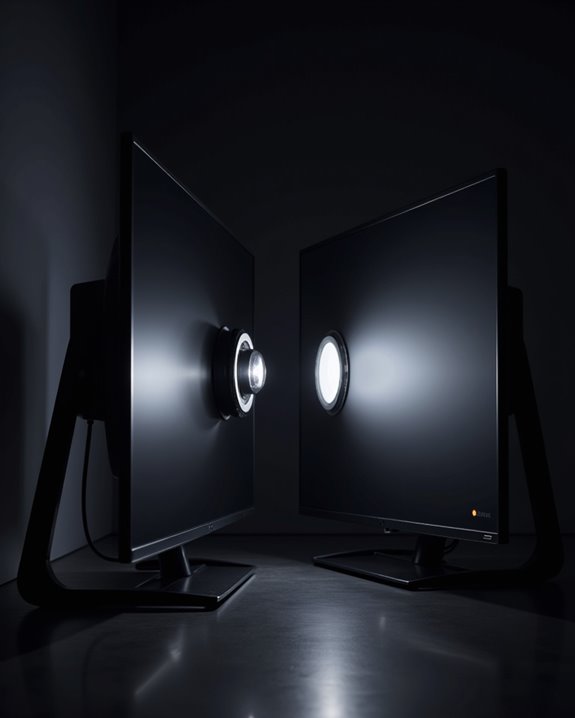
A clear distinction exists between projector and reflector headlights, primarily in their beam patterns and physical appearance. Projector headlights use a convex lens to focus light into a sharp, narrow beam with a defined cutoff, reducing glare and improving long-distance visibility. Reflector headlights, in contrast, feature a bowl-shaped reflective housing that spreads light more widely, but with less precision. Key features include:
- Projector headlights: smooth, glass-like lens at the center; brighter, more intense light; modern, compact design.
- Reflector headlights: open, reflective bowl without a visible lens; softer, scattered light; traditional look.
Projector systems often support higher color temperature bulbs, producing a whiter or bluer light, while reflectors usually pair with halogen bulbs. Proper headlight maintenance helps preserve clarity and light output for both types. Additionally, projector headlights typically incorporate a lens assembly that enhances focus and sharpness, further distinguishing them from reflector designs.
Identifying the Lens Structure in Your Headlight Assembly
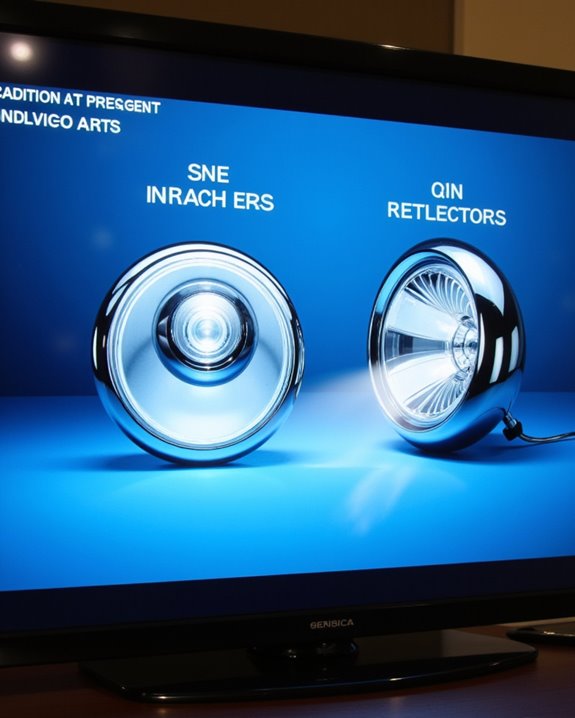
Examining the lens structure within a headlight assembly is essential for distinguishing projector headlights from other types. Projector headlights feature a distinct lens assembly—a group of optical elements, often made of glass or high-grade plastic, that focus and direct light with high precision. The lens assembly typically includes a round, convex lens positioned at the front, easily visible within the headlight housing. High-quality optics are critical for achieving optimal light focus and minimizing distortion.
Key characteristics of projector lens assemblies:
- Optical coatings are applied to the lens surface. These coatings reduce glare, enhance light transmission, and minimize unwanted reflections.
- The lens assembly is designed to maintain strict focal length, ensuring sharp, focused light output.
- Some assemblies incorporate filters or polarizing elements to further improve image clarity and reduce glare.
These design elements differentiate projector headlights from reflector-based systems.
Recognizing the Sharp Cutoff Line in Light Output

Why does the light from projector headlights appear so distinct on the road? The answer lies in the sharp cutoff line—a clear, straight boundary where the light ends. This line is created by a built-in cut-off shield or shutter, which blocks upward light, concentrating illumination directly onto the road. The result is a focused beam pattern that enhances nighttime visibility and minimizes glare for oncoming traffic.
Key characteristics include:
- Crisp light boundary, often Z-shaped, easily visible against walls or other vehicles.
- Even beam distribution, regardless of color temperature, whether cool white or warm yellow.
- Adaptability to various mounting styles, such as recessed or flush installations.
- Use of an elliptical reflector and lens to direct and shape the light.
This design ensures both safety and clarity, outperforming traditional reflector headlight systems.
Examining Bulb Types Used in Projector Headlights
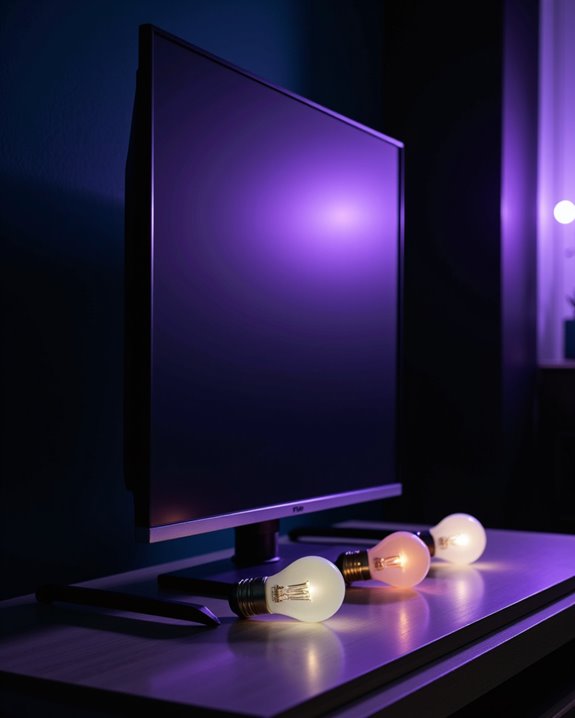
Projector headlights rely on specific types of bulbs to produce their distinctive, focused beam patterns. The most common options are halogen, HID (High-Intensity Discharge), and LED (Light Emitting Diode) bulbs. Each type affects bulb longevity and color temperature—the hue and warmth of the emitted light. Bulb types also influence the overall performance and compatibility with different projector housings.
- Halogen bulbs use a tungsten filament, offering a warm white color temperature but relatively short bulb longevity, usually around 1,000 hours.
- HID bulbs create light through an arc between electrodes in xenon gas, providing a cooler color temperature and longer lifespan, typically several thousand hours.
- LED bulbs employ semiconductors, delivering the longest bulb longevity, often 25,000 hours or more, and a variable color temperature.
Bulb compatibility depends on projector housing design, so proper matching is essential for safe and effective operation.
Performance Benefits of Projector Headlights
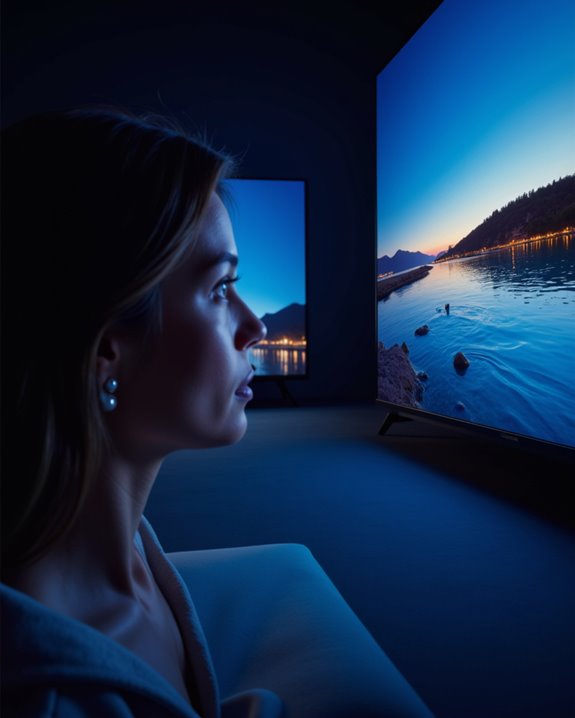
How do modern vehicles achieve both bright, controlled lighting and a stylish appearance on the road? Projector headlights, developed through advances in historical development and manufacturing processes, offer a precise, focused beam pattern. This controlled light improves nighttime visibility, sharply defining road edges and reducing glare for oncoming drivers. Compared to traditional reflector headlights, projector systems—often employing LED or HID (high-intensity discharge) bulbs—deliver:
- Enhanced beam control, which limits scattered light and increases safety.
- Improved light quality, with a whiter color temperature for clearer object recognition.
- Higher energy efficiency, as LEDs use less power and last longer, minimizing maintenance.
The compact design of projector headlights results from refined manufacturing processes, allowing them to integrate seamlessly with modern vehicle styling while providing superior performance benefits.
Modern Design Features Linked to Projector Systems
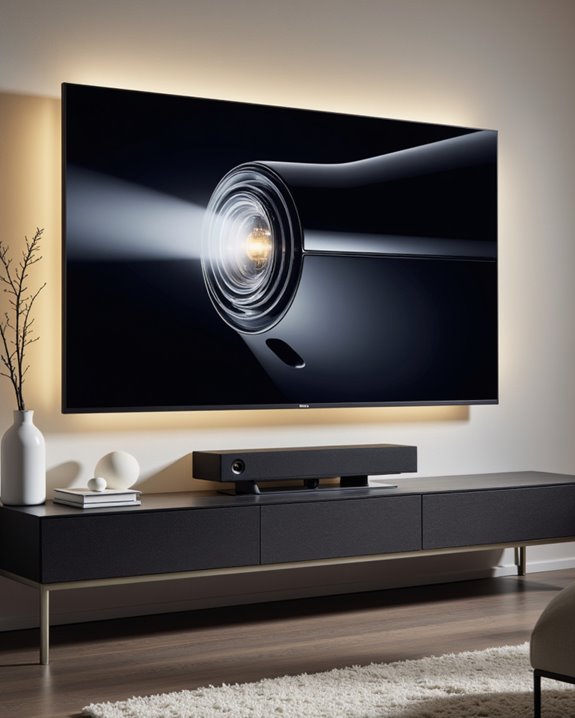
Alongside improved lighting performance, modern projector systems are recognized for their advanced design features that set them apart from traditional models. High resolution, such as 4K, and High Dynamic Range (HDR) support deliver sharp images and richer contrast. Color accuracy is enhanced through advanced display technologies like DLP (Digital Light Processing), LCD (Liquid Crystal Display), and LCoS (Liquid Crystal on Silicon). Each technology offers unique advantages for color and clarity.
Noteworthy features include:
- Flexible zoom and throw distance adjustments for optimal screen fit
- Long-life, energy-efficient laser or LED illumination
Connectivity options are also key, with HDMI, Wi-Fi, and Bluetooth enabling easy device integration. Many projectors come with built-in streaming services and app support, offering users direct access to content and remote control functionality.
Comparing Beam Patterns for Accurate Identification
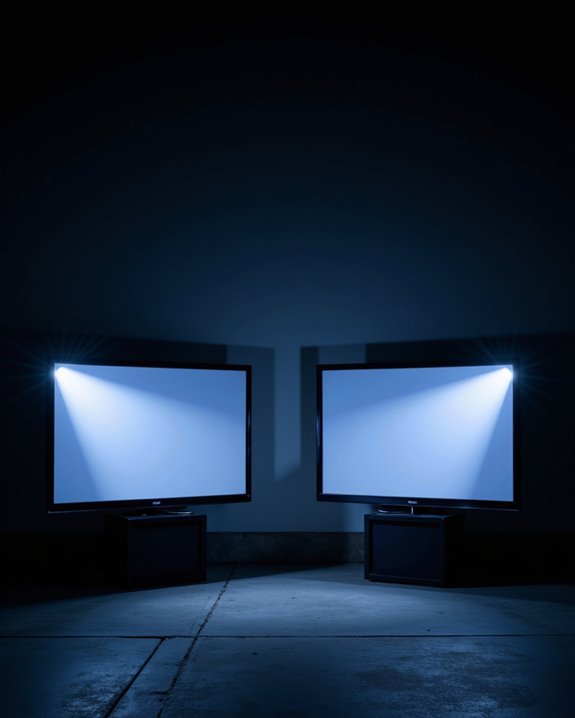
When evaluating projector headlights, understanding the differences in beam patterns is essential for accurate identification. Projector headlights focus light through a lens, creating a precise, controlled beam. The two main standards—DOT (Department of Transportation) and ECE (Economic Commission for Europe)—have distinct beam shapes and regulatory requirements:
- DOT patterns deliver a uniform flood of light, visible from 500 feet.
- ECE patterns add a front position function for improved visibility.
Key features to examine include color temperature, which refers to the perceived warmth or coolness of the light, and light diffusion, the evenness with which the light spreads. HID (High-Intensity Discharge) and halogen bulbs affect these characteristics. Visual inspection and regulatory markings help confirm compliance. Both standards prioritize safety by reducing glare and enhancing road visibility.
Frequently Asked Questions
Can Projector Headlights Be Retrofitted Into Vehicles With Reflector Headlights?
Much like modernizing a classic novel, headlight compatibility allows projector headlights to be retrofitted into vehicles with reflector headlights. However, retrofit challenges arise, including costly modifications, complex installation, and the necessity to guarantee legal compliance and ideal performance.
Do Projector Headlights Require Special Cleaning or Maintenance Routines?
Projector headlights benefit from specific cleaning routines and maintenance tips, such as using soft cloths to prevent scratches, monitoring lamp life, and ensuring vents remain clear. Regular inspections and dust management help maintain ideal performance and longevity.
Are Projector Headlights Legal in All States or Regions?
Like beams of light weaving through a patchwork of laws, projector headlights must navigate regional regulations. Legal compliance varies; proper installation and adherence to state and federal standards are essential for their lawful use across different regions.
How Much Does It Cost to Replace a Projector Headlight Assembly?
Replacing a projector headlight assembly varies by headlight types and vehicle models, with repair costs typically ranging from $1,000 to $1,400. Additional installation fees may apply, and more advanced features or brands can increase the total expense.
Will Using Aftermarket Bulbs Damage My Projector Headlights?
Much like fitting the wrong key into a lock, using incompatible aftermarket bulbs in projector headlights can cause heat damage or improper function. Attention to bulb compatibility and warranty considerations helps prevent costly repairs and maintains ideal performance.


